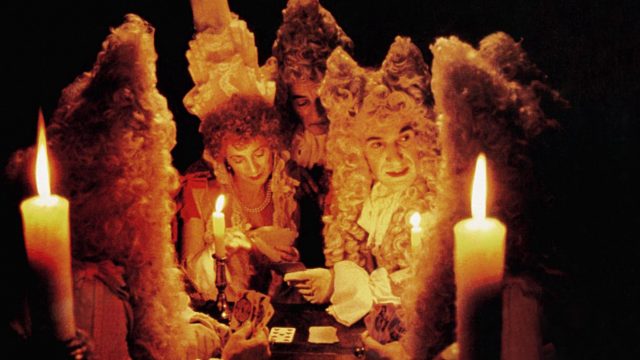Period pieces, like science fiction, tell as much about the times they are made as the ones depicted onscreen. A certain amount of judgement on the part of the audience is involved. Sometimes it’s a yearning for the good old days; sometimes it’s bemusement at the naivety of our predecessors. “Fools in old-style hats and coats,” as the poet Philip Larkin put it. If people are some combination of genetics, environment, experiences and how they transform those experiences into a sense of “self,” then we can’t help but be different from those in the past. The main factor that has profoundly changed us from our ancestors, particularly in the Western world, is technology. Modern transportation, especially cars and planes, changed how people relate to time and space. Photographs altered how people conceive of the world and themselves. Film added the notion of time and narrative sequence to photography’s representation. Technology has changed how we think. The people in the past were different enough they might as well be a different species. (I’m aware that this is a dangerous argument because by this logic, people who live in less technologically developed parts of the world are fundamentally different from you and I, which is a half-step away from xenophobia and seeing others as lesser humans.)
How does one represent the people in the past and their thinking now that our own thinking has been so altered by technology? An era’s art and documents can provide clues, but are your emails and the photos you post online an accurate depiction of how you think or who you are? A contemporary audience’s misunderstanding of historical people is key to Peter Greenaway’s The Draughtman’s Contract. The mystery in the film is not only “Whodunnit?” but “What are they really thinking?” Mistaking the characters in the film for people like yourself is both the downfall of the draughtsman (who is a less than ideal viewer surrogate) and what gives the ending is shocking power.
The film begins in a dark room as a man, made up and bewigged so that the viewer and others in the film can identify him as 17th-century aristocracy, archly tells a story, equal parts tall tale and local gossip. Just as his story is exaggerated for effect, so too is his make-up and wig, both “more” than they need to be. Despite the darkness of the room, this is a party. It’s here that Mrs. Herbert, the lady of an estate, tries to hire Mr. Neville, an artist, to draw a series of pictures of the property as a gift to her husband. Neville resists, haughtily, until they finally reach an agreement. In addition to his fee and complete control over the views while drawing (he takes great pleasure in telling the wealthy landowners where they’re allowed to stand), he receives contractually obligated sexual favors from Mrs. Herbert. Mrs. Herbert agrees.
It could be the set-up to a romance, or a ribald farce along the lines of Tom Jones. But Greenaway, along with most people on the estate, has something other than sex on his mind. Despite Neville’s insistence that the landscape be kept unchanged over the several days it takes him to draw, objects begin appearing that he dutifully includes in his sketches: a pair of boots, a ladder, a man’s shirt.
When Mr. Herbert is discovered missing and foul play is suspected, Mr. Neville’s drawings are quickly interpreted as possible clues to Herbert’s murder. Everyone in the film is a budding art critic. It’s like a version of Blow-Up before the age of photography.
The estate is the subject of both Neville’s drawings and everyone’s schemes. This isn’t a movie where one person’s clever plan works out. Instead, everyone strategizes after each development to make it benefit them. It’s a movie of plots in all senses of the word: land, stories, and conspiracies. (You could probably include the Yiddish “plotz” in there, too.) Words are the tools of everyone’s schemes, often as blunt instruments. There’s little attempt to seduce or charm or manipulate. Everything is said either to outwit someone else or threaten them, and the threats don’t even come veiled. This is why these characters seem so alien. To a middle-class person who came of age in the late 20th century, a time of plenty, one who values getting along and “niceness” as fundamental human qualities, characters this indifferent to likability even during the course of normal conversation are as unfathomable as any alien life form. Add to that the costumes, tweaked enough to be just shy of ridiculous, and the mannered way of speaking, and it’s hard to take any of these people seriously. So at the end when it’s revealed how ruthless and vicious they can be, it seems for the moment out of place. But it’s not…you are.
The Draughtsman’s Contract is available on the Criterion Channel

